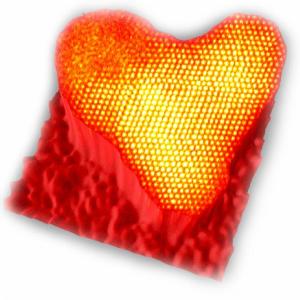David Pearmain
the worlds smallest heart
What got you interested in this area of science?
A thirst to know the way that everything works was what first got me interested in physics at GCSE level. Since then I have pursued this interest and am currently working in the Nanoscale Physics Research Laboratory doing my PhD. This was largely due to exciting projects I was involved in as an undergraduate as I enjoy the hands on approach to experimental physics and its relevance to real world scenarios.
How is the work you are currently doing relevant to everyday life?
How atoms arrange themselves when in small groups is very relevant to everyday life. For example, the structural characterisation of catalyst particles is useful in determining the fundamental reasons why a catalytic sample may be useful within industry. With this knowledge the design of catalysts can be improved for more effective industrial processes, such as the catalytic converter fitted to cars.
What does your research hope to achieve?
I hope to develop reliable and efficient methods in the structural characterisation of metallic clusters (including those used in catalysis), as well as gaining an understanding as to their formation mechanisms.
Briefly, what does the image show?
The image shows a palladium cluster resting on a carbon surface. The cluster was formed by the coming together of smaller clusters that traveled across the surface of the carbon to bind together in a heart shape. The atomic columns are visible and the brightness of each column corresponds to how many atoms are stacked up on top of each other. Each atom diameter is 700,000 times smaller than the width of a human hair! The image was taken using an instrument called a Scanning Transmission Electron Microscope, and used aberration correction to enable single atoms to be imaged.


